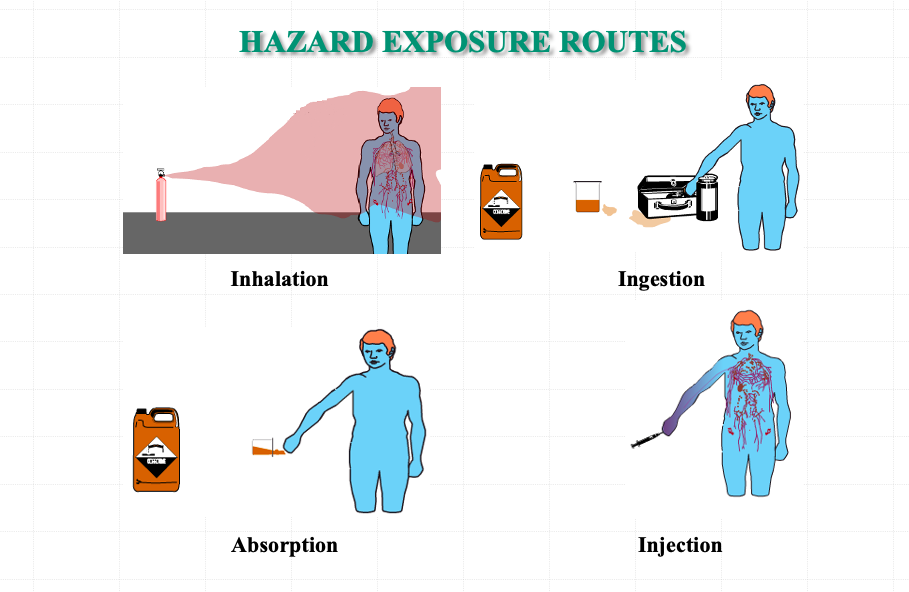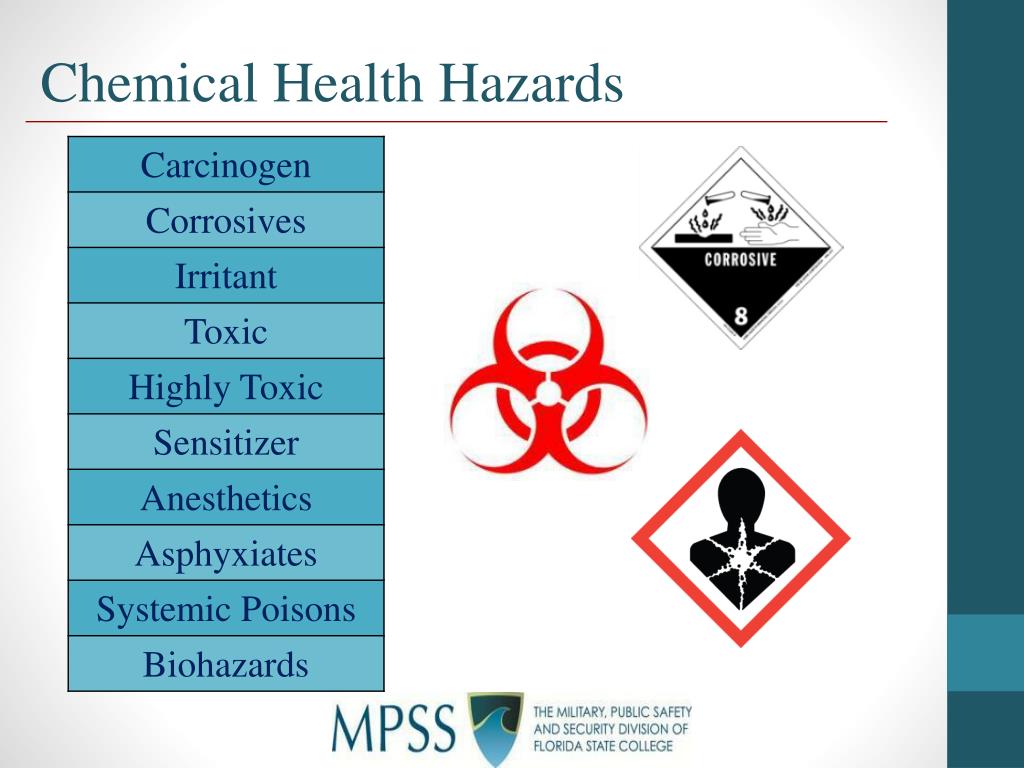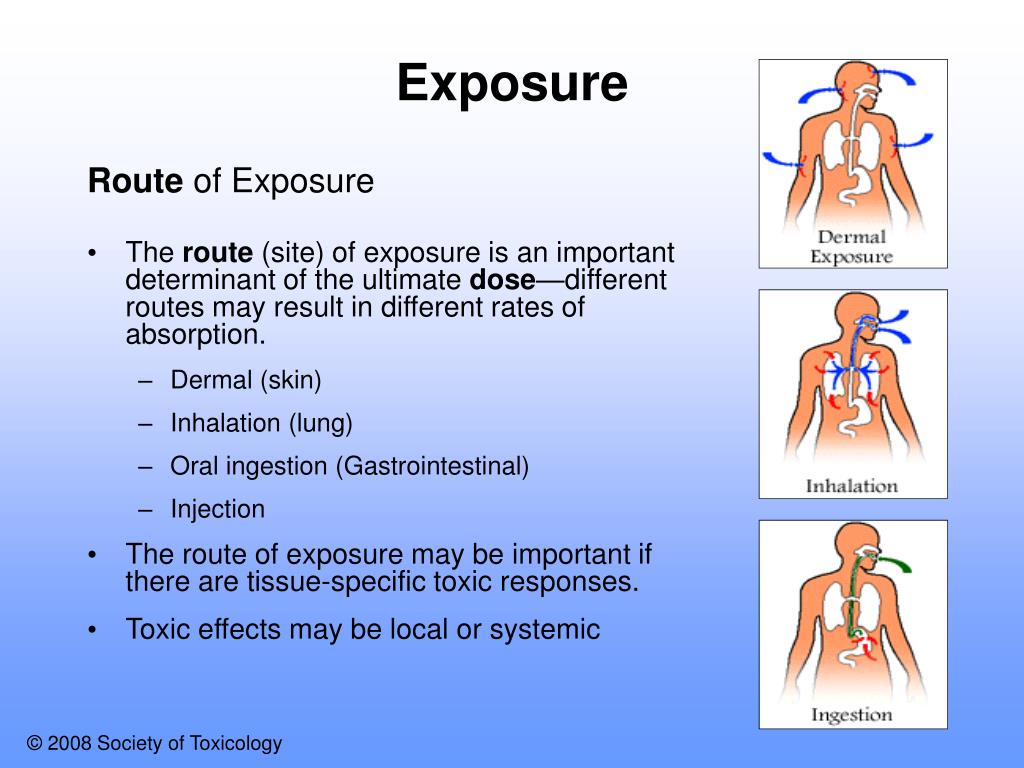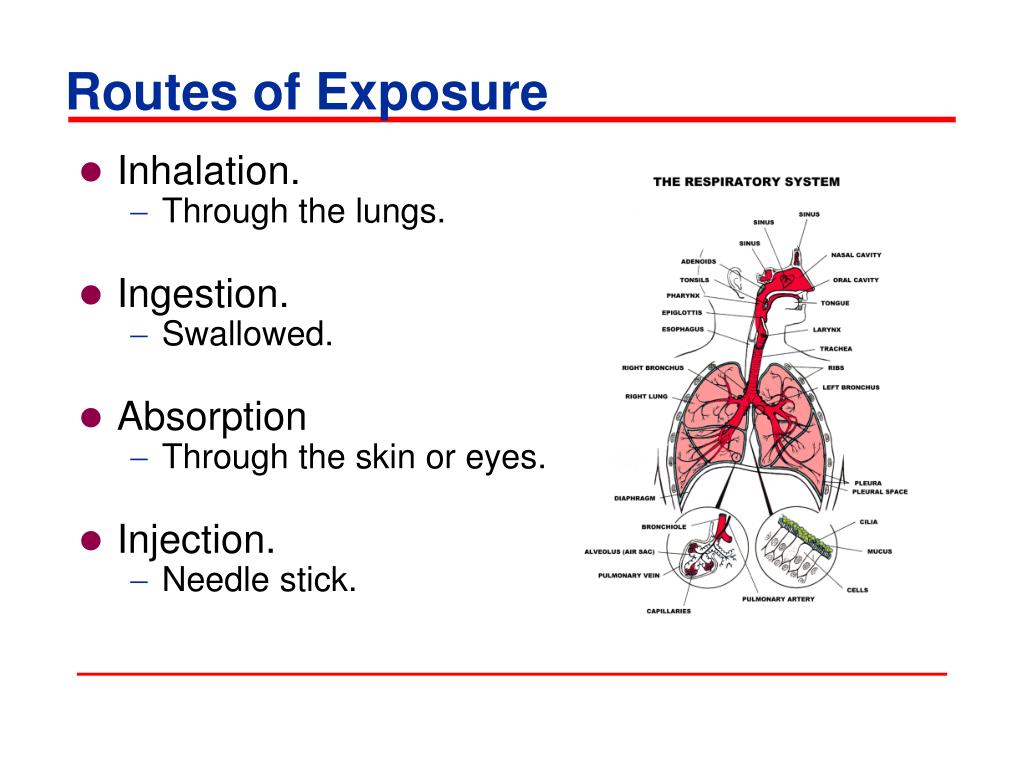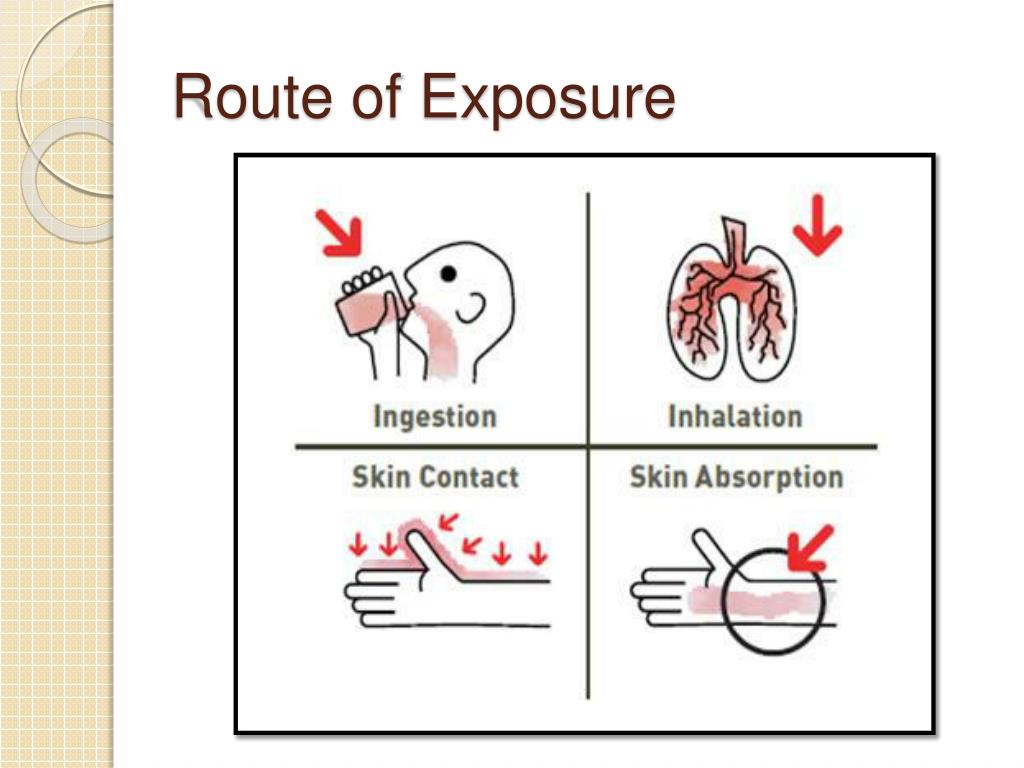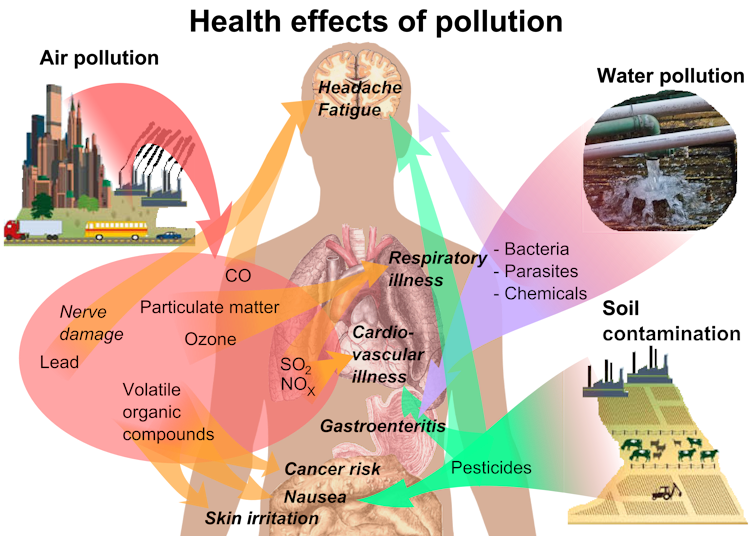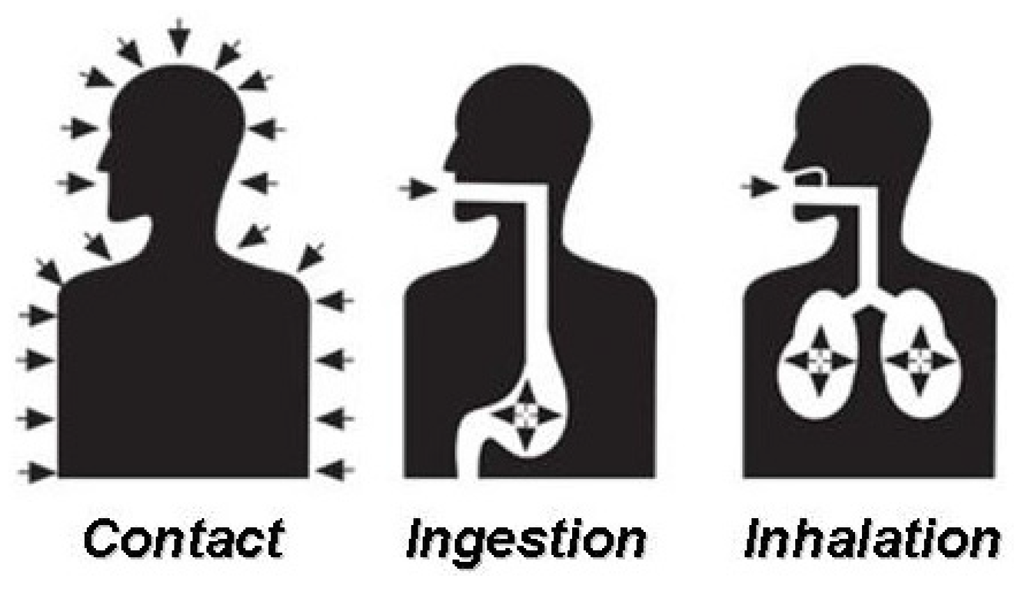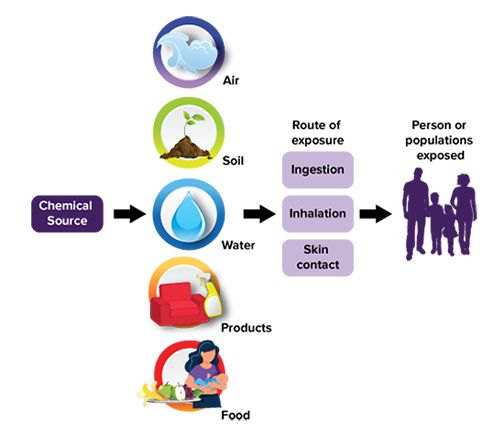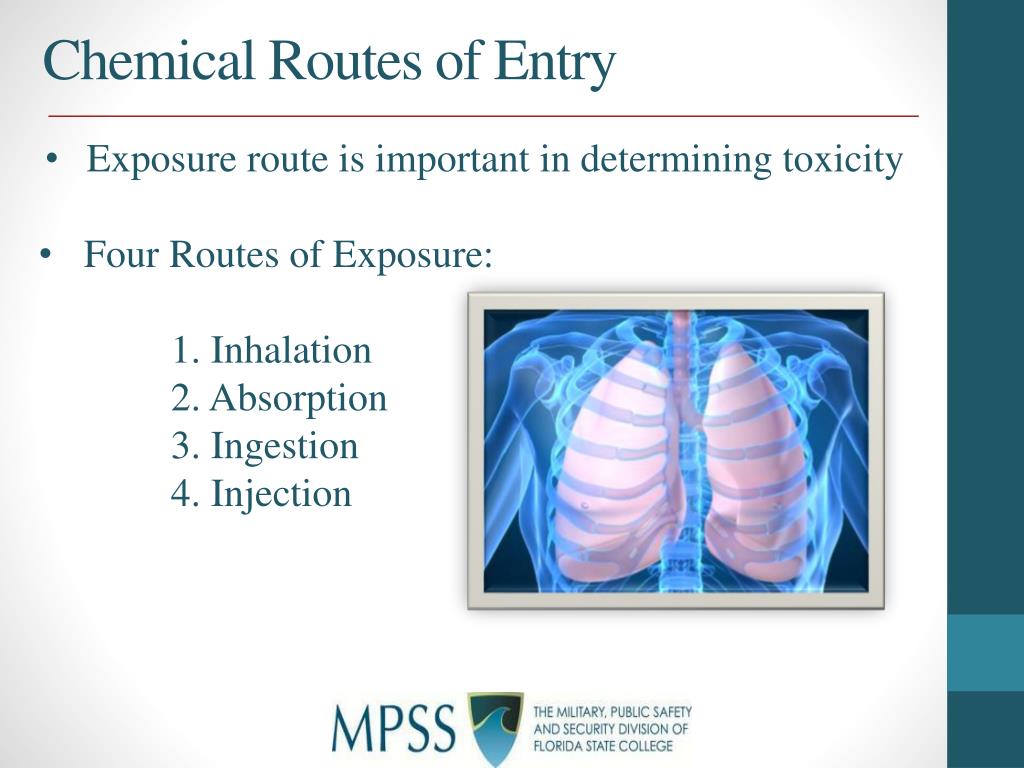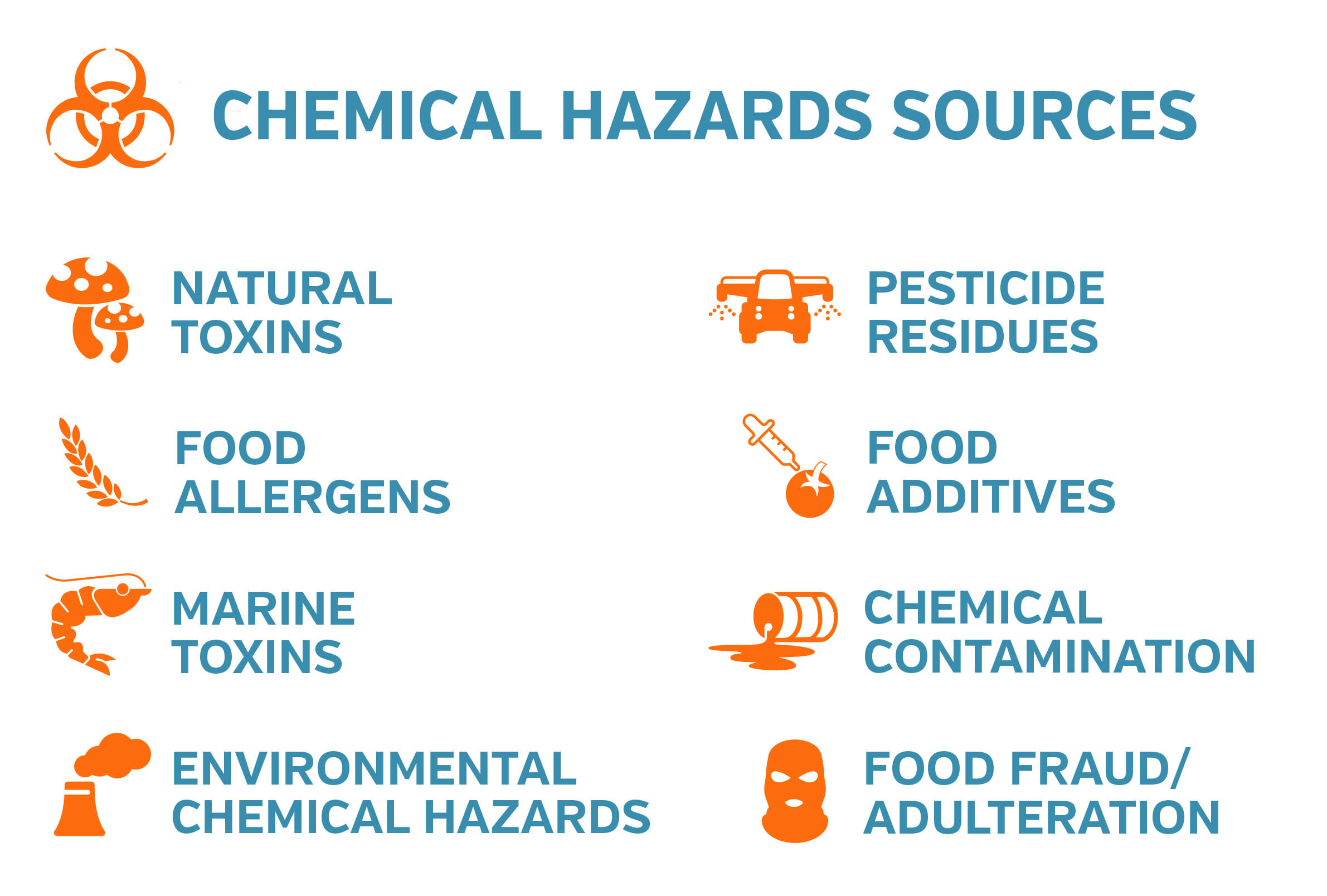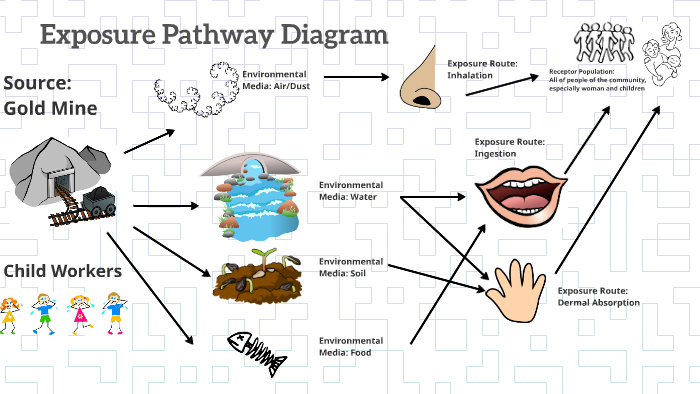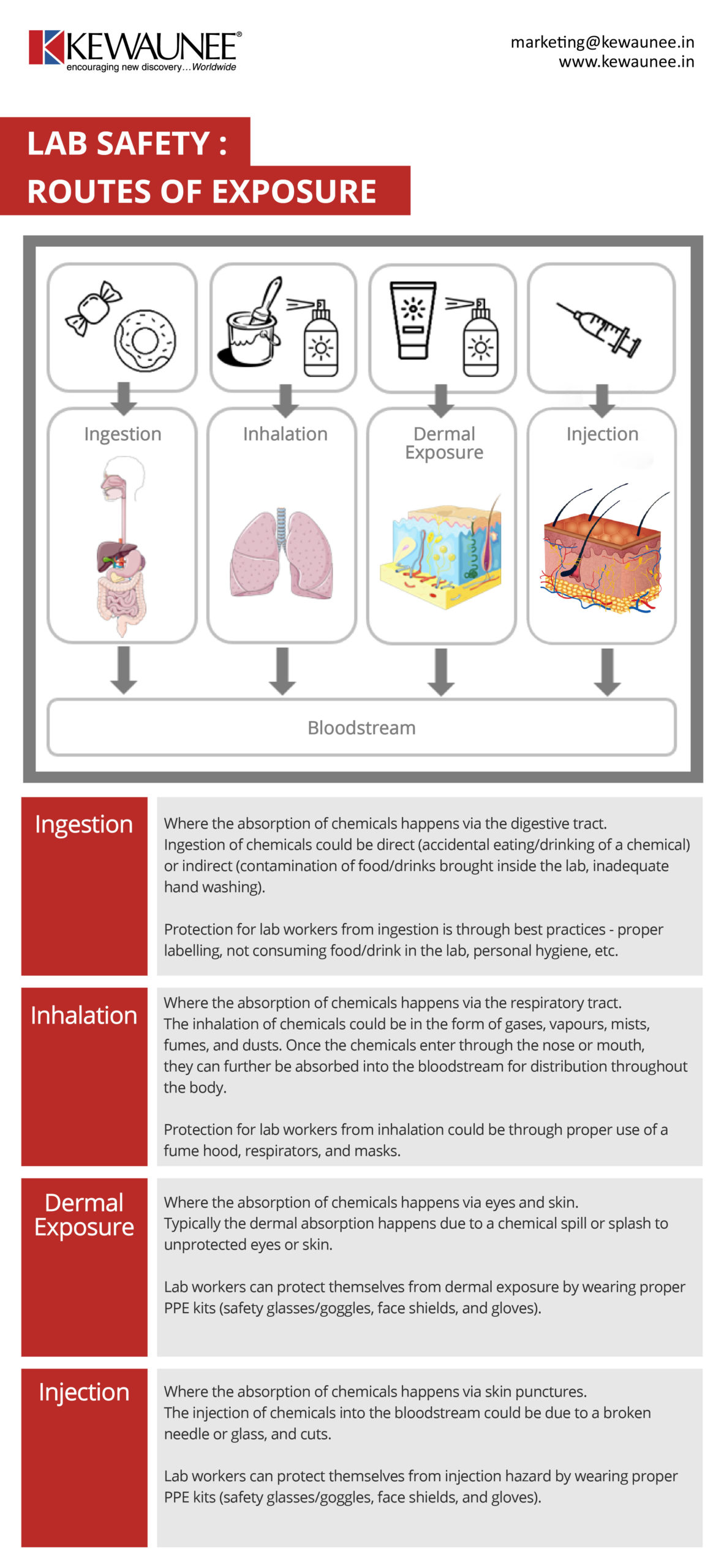What Are The Three Primary Methods Of Chemical Exposure

Invisible threats lurk in the air we breathe, the food we consume, and the surfaces we touch. Chemical exposure, a silent and often unseen danger, poses a significant risk to human health. Understanding how these chemicals enter our bodies is the first crucial step in protecting ourselves and our communities.
This article delves into the three primary routes of chemical exposure: inhalation, ingestion, and dermal absorption. We will explore the specific pathways, potential health consequences, and preventative measures associated with each method. By illuminating these critical aspects, this aims to empower readers with the knowledge necessary to mitigate the risks of chemical contamination.
Inhalation: Breathing in the Danger
Inhalation, or the act of breathing in contaminated air, is a major pathway for chemical exposure. Airborne chemicals, ranging from gases and vapors to dusts and aerosols, can easily enter the respiratory system.
The effects of inhaled chemicals can vary greatly depending on the substance, concentration, and duration of exposure. Short-term exposure might cause irritation of the eyes, nose, and throat, coughing, and shortness of breath.
Long-term inhalation of certain chemicals can lead to chronic respiratory diseases like asthma, bronchitis, and even lung cancer. For example, exposure to asbestos can cause asbestosis, a serious and potentially fatal lung condition.
Specific Examples and Risks
Occupational settings often present high risks of inhalation exposure. Construction workers are exposed to dust from concrete and drywall.
Factory workers who produce chemicals might inhale harmful fumes. Miners working in underground environments face risks from gases like radon and methane.
Beyond the workplace, household products such as cleaning agents, paints, and pesticides can release volatile organic compounds (VOCs) into the air. These VOCs can cause a range of health problems, particularly in poorly ventilated spaces.
Prevention and Mitigation
Effective ventilation is crucial in reducing inhalation risks. Ensuring proper airflow in homes, workplaces, and public spaces can help dilute and remove airborne contaminants.
Respiratory protection, such as masks and respirators, should be used when working with hazardous materials or in environments with poor air quality. The type of respirator required depends on the specific chemical being handled and the concentration of exposure.
Regular air quality monitoring is essential in identifying and addressing potential inhalation hazards. Employers have a responsibility to conduct air sampling and implement measures to protect their workers from exposure.
Ingestion: Unknowingly Consuming Chemicals
Ingestion, or the act of swallowing contaminated substances, is another primary route of chemical exposure. This can happen directly through contaminated food or water, or indirectly through hand-to-mouth contact.
The digestive system is designed to process food, but it is not equipped to handle all types of chemicals. Some ingested chemicals can be absorbed into the bloodstream, causing systemic effects throughout the body.
The severity of effects depends on the nature of the chemical, the amount ingested, and the individual's susceptibility. Symptoms can range from mild gastrointestinal upset to severe poisoning and organ damage.
Specific Examples and Risks
Contamination of food and water sources is a major concern. Pesticides used in agriculture can leave residues on fruits and vegetables.
Industrial waste and pollutants can contaminate water supplies. Heavy metals like lead and mercury can accumulate in fish, posing a risk to those who consume them.
Children are particularly vulnerable to ingestion exposure due to their tendency to put objects in their mouths. Lead paint in older homes is a significant risk for lead poisoning in young children.
Prevention and Mitigation
Thoroughly washing fruits and vegetables before consumption is essential to remove pesticide residues. Choosing organic produce can also reduce exposure to synthetic pesticides.
Ensuring safe drinking water is crucial. This can involve using water filters, regularly testing water quality, and advocating for responsible waste management practices.
Practicing good hygiene, such as washing hands frequently, especially before eating, can prevent the transfer of chemicals from surfaces to the mouth. Proper storage of chemicals away from food and water sources is also vital.
Dermal Absorption: Through the Skin
Dermal absorption, or the passage of chemicals through the skin, is the third primary route of chemical exposure. The skin acts as a barrier, but some chemicals can penetrate it and enter the bloodstream.
The rate and extent of dermal absorption depend on several factors. These factors include the chemical's properties, the concentration of the substance, the duration of contact, and the condition of the skin.
Damaged or broken skin is more permeable to chemicals than intact skin. Solvents, for example, can readily dissolve skin oils, making it easier for chemicals to penetrate.
Specific Examples and Risks
Workers in industries that handle chemicals are at high risk of dermal exposure. Agricultural workers who apply pesticides, construction workers who work with cement, and healthcare workers who handle medications are examples.
Exposure to corrosive chemicals can cause burns and skin irritation. Exposure to certain solvents can lead to dermatitis and other skin conditions.
Even seemingly harmless products like lotions and cosmetics can contain chemicals that are absorbed through the skin. Some ingredients, like parabens and phthalates, have been linked to endocrine disruption and other health concerns.
Prevention and Mitigation
Wearing appropriate protective clothing, such as gloves, aprons, and coveralls, can prevent skin contact with hazardous chemicals. The type of protective clothing should be selected based on the specific chemical being handled.
Washing skin thoroughly with soap and water after potential exposure can remove chemicals before they are absorbed. Using barrier creams can also provide a protective layer on the skin.
Choosing personal care products with fewer potentially harmful chemicals can reduce dermal exposure. Reading product labels carefully and researching ingredients can help make informed choices.
Conclusion: A Proactive Approach to Chemical Safety
Understanding the three primary routes of chemical exposure – inhalation, ingestion, and dermal absorption – is essential for protecting human health. By recognizing how chemicals can enter our bodies, we can take proactive steps to minimize risks.
This includes implementing preventative measures in workplaces, homes, and communities. Through promoting safe practices, advocating for stricter regulations, and fostering public awareness, we can create a healthier and safer environment for all.
Continued research and monitoring are crucial to identifying emerging chemical threats and developing effective strategies to mitigate their impact. Ultimately, a collaborative effort involving individuals, industries, and governments is necessary to ensure that chemical safety remains a top priority.
